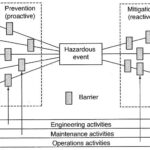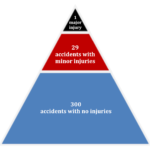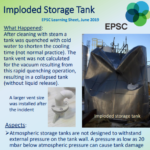Layers of Protection Analysis (LOPA) is a risk assessment method that is used to evaluate the likelihood and severity of hazardous events. It is a semi-quantitative method, meaning that it uses both qualitative and quantitative factors to assess risk. LOPA is a popular risk assessment method in the process industries, such as the chemical, oil and gas, and power generation … [Read more...]
Bow Tie Analysis
Bow tie analysis is a risk assessment technique that uses a graphical representation to identify and assess the risks associated with a particular activity or process. Origin of Bowtie Analysis The origin of Bowtie analysis is unclear, but it is believed to have originated in the 1970s. The first known use of the bowtie diagram was in a lecture on hazard analysis given … [Read more...]
Behaviour Based Safety (BBS)
Behaviour based safety (BBS) is a proactive approach to improving safety in the workplace. It focuses on identifying and correcting unsafe behaviours before they lead to accidents or injuries. What is behaviour? Behaviour is the way that an individual acts. It is the sum total of all the actions and reactions that an individual or organism makes in response to its … [Read more...]
EPSC Learning Sheets
Process Safety beacon is published by Center for Chemical Process Safety (CCPS) every month which is an industrial Safety tool for conveying One Page Safety message for manufacturing personnel every month. EPSC - EUROPEAN PROCESS SAFETY CENTRE, is an international not for profit organization. It is founded in 1992 and provides an active network for members to work … [Read more...]
62nd Annual Safety in Ammonia Plants and Related Facilities Symposium
A century of ammonia synthesis technology - with an emphasis on continual progress in ammonia plant safety - is the theme of AIChE’s 62nd Annual Safety in Ammonia Plants and Related Facilities Symposium. Organised by AIChE’s Ammonia Safety Committee, the annual symposium is dedicated to improving the safety of plants that manufacture ammonia and related chemicals, such as … [Read more...]



